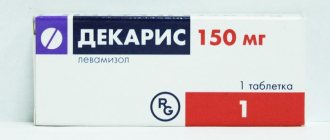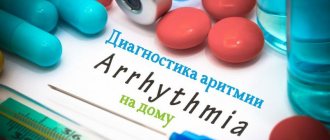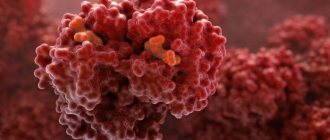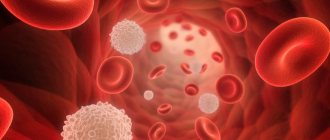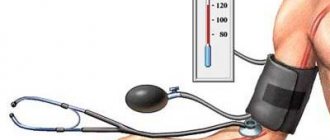Solcoseryl for hemorrhoids is especially effective during exacerbation of the disease. The drug relieves pain and inflammation, and also increases the regenerative abilities of tissues, which is important after surgery to remove hemorrhoids or in the presence of tears and ulcers of the anus. Solcoseryl is very convenient to use, as it can be used orally, parenterally and externally. Today the drug is available in several dosage forms: gel, paste, ointment, injection solution, tablets.
The undoubted advantage of Solcoseryl is the excellent ratio of quality, effectiveness and reasonable cost of the drug.
What is Solcoseryl ointment used for?
The drug is based on deproteinized dialysate obtained through special processing from the blood of calves. This substance is often used in medicine in countries such as China, Korea, and the entire CIS. It has proven itself to be an effective remedy that can:
- enrich tissue cells damaged due to hypoxia with oxygen and glucose;
- start tissue repair processes;
- activate healthy cell division processes;
- increases the level of energy produced by cells;
- protects the skin from external damage by forming a film on its surface;
- triggers the production of collagen by tissues.
Based on the activity of the drug, the drug can be used for:
- frostbite;
- psoriasis;
- anal ring cracks;
- cuts;
- abrasions;
- scratches;
- bedsores;
- acne marks;
- dermatitis;
First of all, to achieve the best effect, it is necessary to start therapy in the early stages of the problem.
pharmachologic effect
Pharmacological action - wound healing, angioprotective, membrane stabilizing, regenerating, cytoprotective, antihypoxic.
The drug Solcoseryl is a deproteinized hemodialysate containing a wide range of low-molecular components of cell mass and blood serum of dairy calves with a molecular weight of 5000 D, the properties of which are currently only partially studied by chemical and pharmacological methods.
In in vitro tests, as well as during preclinical and clinical studies, it was found that Solcoseryl:
— increases reparative and regenerative processes;
— promotes activation of aerobic metabolic processes and oxidative phosphorylation;
— increases oxygen consumption in vitro and stimulates glucose transport into cells under hypoxic conditions and into metabolically depleted cells;
— increases collagen synthesis (in vitro);
— stimulates cell proliferation and migration (in vitro).
Solcoseryl gel does not contain fats as auxiliary components, making it easy to wash off. Promotes the formation of granulation tissue and the elimination of exudate.
From the moment fresh granulations appear and the wound dries, it is recommended to use Solcoseryl ointment, which contains fats as auxiliary components and forms a protective film on the wound surface.
Solcoseryl ointment as a face mask
Cosmetologists claim that the use of Solcoseryl in the early stages of age-related changes allows you to maintain youthful skin. Timely start of use can replace expensive laser rejuvenation in the salon. First of all, Solcoseryl allows you to get rid of wrinkles and prevent their earlier appearance. The ointment is capable of:
- provide adequate nutrition to the facial skin;
- get rid of acne;
- relieve inflammation;
- improve complexion;
- tighten the oval;
- get rid of wrinkles.
The expected effects are possible due to the fact that using a mask allows you to saturate tissues and cells with oxygen and accelerate regeneration. Thanks to the application of the cream, collagen, which is responsible for skin elasticity, begins to be actively produced. The more collagen produced, the fewer wrinkles your skin will have. It is like a support for a heavy skin sheet, preventing its individual areas from falling through, preventing the formation of wrinkles.
Side effects
Solcoseryl solution for injection.
In rare cases, allergic reactions may develop (urticaria, hyperemia and swelling at the injection site, increased body temperature). In this case, it is necessary to stop using the drug and prescribe symptomatic treatment.
Solcoseryl gel, ointment.
In rare cases, allergic reactions in the form of urticaria and marginal dermatitis may develop at the site of application of Solcoseryl. In this case, you must stop using the drug and consult a doctor.
A short-term burning sensation may be observed at the site of application of Solcoseryl gel. If the burning sensation does not go away for a long time, the use of Solcoseryl gel should be abandoned.
Solcoseryl injections: what for
Any surgical intervention is accompanied by a violation of the integrity of the skin and tissues. If the operation involves the removal of some fragment of an internal organ, the body will require a long rehabilitation period, during which the body will be fully or partially restored. Solcoseryl in ampoules can be instantly delivered to tissues, shortening the recovery period. Injections allow you to mobilize all the internal forces of the body to heal wounds, cuts and sutures not only on the outside, but on the internal organs that remain after operations.
Special cases include the prescription of intravenous or intramuscular administration to patients after ophthalmological operations. Solcoseryl ensures active blood circulation, which accelerates the process of adaptation of the organ of vision in the postoperative period, and also reduces the risk of complications.
Modern techniques in the treatment of anal fissure
An anal fissure (or anal fissure or fissure) is a spontaneously occurring linear or damage to the mucous membrane of the anal canal of the rectum and is one of the most common proctological diseases. There are acute and chronic stages of the disease.
Acute anal fissure, if left untreated after the first episode of pain for more than three months, usually becomes chronic. With a chronic anal fissure, the mucous membrane thickens at the edges, external (skin) and internal (fibrous polyp of the anal canal) sentinel tubercles are formed and drug treatment is no longer sufficient.
Causes of anal fissure
- insufficient intake, fatty carbohydrate-rich foods, spicy foods and alcohol abuse
- constipation or diarrhea
- pregnancy and childbirth
- practicing certain sports (cycling)
- mechanical damage to the rectal mucosa (including during anal sex)
- acute hemorrhoids, cryptitis and other proctological diseases
- hard physical labor
Crack: symptoms and signs
- pain in the anus during and after bowel movements
- bleeding during bowel movements in the form of marks on stool and toilet paper
- spasm of the internal sphincter
- feeling of discomfort, itching, burning in the anal area
note
Symptoms such as pain and blood during bowel movements may also indicate the presence of an oncological process. Therefore, do not self-medicate, but consult a doctor in time. With inadequate treatment of an anal fissure, complications may develop such as paraproctitis - acute or chronic inflammation of the tissue. Paraproctitis is one of the most common proctological diseases (20-40% of all rectal diseases). By starting treatment in our center in a timely manner, you can use minimally invasive conservative methods without pain and discomfort.
How is anal fissure treated at GRAND MEDICA?
To diagnose hemorrhoids at the initial consultation, the coloproctologist performs a visual examination, digital examination, anoscopy and, if indicated, sigmoidoscopy (painless instrumental examinations). An anal fissure is a tear in the skin around the anus. This is a common problem that can cause severe pain, especially after bowel movements. This condition is associated with spasm of the internal anal sphincter. The spasm reduces blood flow to the damaged area and interferes with healing. The goal of treatment is to break this pathological cycle and speed up healing.
Conservative treatment
Surgery is effective for treating anal fissures, but it is usually reserved for patients who have failed non-surgical treatments. Alternatives to surgery include laxatives, ointments, botulinum toxin injections, eating a high-fiber diet, and drinking more water. The primary treatment for anal fissures is to use ointments to relax the anal sphincter and reduce pain, thereby promoting healing. However, for some people the use of ointments is inconvenient and embarrassing, and some patients develop headaches that are sometimes so severe that this is a reason to stop treatment with ointments.
Chemical sphincterotomy (botulinum toxin injection)
Injecting botulinum toxin into the anal sphincter muscle relaxes the muscle sufficiently to prevent spasm and pain and leads to healing of the fissure. This procedure is performed under topical anesthesia, as part of outpatient care. The main advantage of using botulinum toxin injection is the ability to avoid lateral sphincterotomy (dissection of the sphincter), in which part of the lateral fibers of the sphincter muscle is dissected; This procedure has a very low risk of permanent incontinence. Most patients feel better after receiving a botulinum toxin injection. Very rarely, but some patients require a second injection of botulinum toxin after 2-3 months.
Lateral sphincterotomy
Sphincterotomy means cutting the sphincter. The operation is performed under general anesthesia. The doctor will make a small incision in the skin near the anus. He will then cut the lower part of the internal sphincter muscle. This will ease the spasm and improve blood circulation to heal the fissure. Cutting the sphincter creates a permanent effect, and one of the risks of this procedure is weakening the strength of the muscle. This is why some patients develop loss of control, which manifests as gas incontinence or stool leakage.
Crack excision
Indications:
- There is a high risk of developing anal incontinence after sphincterotomy;
- Perineal ruptures during childbirth in women;
- Clinical signs of pelvic floor prolapse;
- Age over 60 years;
- The presence of a prolapsing internal sentinel tubercle;
Using an electrocoagulator, an incision is made in the mucous membrane and skin around the crack. Then, flatly, along the projection of the sphincter muscle fibers, a fissure with a crypt, sentinel tubercle and hypertrophied anal papilla is excised within healthy tissue. Excision is performed in the form of a triangle, with its apex facing the intestine, the base facing the perianal skin, or in the form of an ellipse.
After discharge from hospital
For the fastest healing, you should stay in bed for the first few days and walk as little as possible. The wound may take several weeks to heal, so you will need to wear a pad. Regular exercise will help you return to your usual activities faster. You need to ask your doctors what exercises to do and when to start doing them. Recovery after surgery is very individual. Some people experience severe pain and swelling, while others have minimal discomfort. Consult about painkillers and laxatives to prevent constipation.
Any pain caused by the crack should go away quickly. Return to work usually occurs within a few days, depending on your line of work.
If, unfortunately, you experience severe abdominal pain or heavy bleeding, please contact the clinic or emergency room immediately, making sure to notify them that you have had surgery.
In the postoperative period until the wounds heal, patients are required to perform regular sanitation of the anal area using sitz baths with a weak solution of potassium permanganate or chamomile. Perform daily dressings using ointment bases (which our specialist will individually select for you), which have an anti-inflammatory and wound-healing effect.
Weekly medical monitoring of the course of the wound process is necessary until the wounds are completely healed. During the period of wound healing, a diet rich in plant fiber and dietary fiber intake (as an option, psyllium seed preparations) are required to soften the stool.
Diet No. 3 according to M. I. Pevzner
Cooking technology: food is prepared mainly unchopped, boiled in water or steamed, baked. Vegetables and fruits are consumed both raw and boiled. Food should mainly consist of vegetables, fresh and dried fruits, baked goods, cereals, and fermented milk drinks.
Allowed:
- Bread – wheat bread made from wholemeal flour: “Doctorsky”, “Zdorovye”, crispbread (soaked), rye. The cookies are dry, unpalatable pastries.
- Soups - mainly from vegetables in meat broth, cold fruit and vegetable soups, borscht, beetroot soup, cabbage soup made from fresh cabbage.
- Meat and poultry – lean varieties of various types of meat, chicken, turkey, boiled or baked, in pieces or chopped. Milk sausages.
- Fish – low-fat types, boiled or baked; seafood dishes.
- Vegetable dishes and side dishes - various types of vegetables and herbs, non-acidic sauerkraut, beets are especially recommended. Dishes and side dishes made from flour, cereals, legumes, crumbly and semi-viscous porridges, puddings, casseroles. Pasta, boiled and in the form of casseroles, dishes made with buckwheat are especially recommended. Legumes: green peas, bean curd.
- Eggs – no more than one egg per day, it is better to add them to dishes.
- Fruits, berries, sweet dishes and sugary products - melons, plums, figs, apricots, prunes, sugar, jam, especially rowan, honey, compotes (especially rhubarb), mousses, fruit candies are especially recommended.
- Milk, dairy products and dishes made from them - milk (if tolerated - sweet), sour cream, cottage cheese, yogurt, one- and two-day kefir, acidophilus milk, cheeses.
- Sauces and spices - milk, sour cream with vegetable broth, fruit and berry sauces.
- Fats – butter, vegetable oils from dishes.
- Appetizers - raw vegetable salads, vinaigrettes with vegetable oil, vegetable caviar, fruit salads, mild cheese, low-fat ham, soaked herring, jellied meat and fish.
- Drinks - tea, coffee substitutes, rosehip and wheat bran decoction, fruit and vegetable juices (plums, apricots, carrots, tomatoes).
Prohibited:
Bread made from premium flour, puff pastry and pastry, fatty meats and fish, duck, goose, smoked meat and fish, canned fish and meat, (limit rice and semolina), radish, radish, garlic, onion, turnip, mushrooms, jelly, blueberries, quince, dogwood, chocolate products with cream, hot and fatty sauces, horseradish, mustard, pepper, cocoa, black coffee, strong tea, animal and cooking fats, alcoholic beverages.
The clinic's coloproctology service has the most modern equipment and technologies for diagnosing and treating a wide range of diseases of the colon and rectum.
Make an appointment with a proctologist by phone or leave a request on the website.
How to inject Solcoseryl for gastritis
Gastritis is a disease of the gastric mucosa that can occur for various reasons. Solcoseryl ampoules will not become the main drug used in the treatment of gastritis, but it can speed up the healing process, while the prescribed therapy will relieve the patient of the source of the problem.
The gastric mucosa can become inflamed not only as a result of poor nutrition, but also as a result of infection with gastrointestinal infections. The attending physician will first conduct an examination and evaluate the test results, which will allow him to prescribe effective therapy. Solcoseryl will be used as an addition to the main treatment, as it will help the stomach tissues to regenerate faster, ulcers to heal, and inflammation to disappear.
Analogues of the drug
What analogues exist for the drug
Solcoseryl has only one similar drug with a similar effect in the treatment of hemorrhoids - this is Actovegin. The medication is approved for use for any severity and stage of hemorrhoidal pathology.
The medicine has a mild effect on the intestinal mucous tissues, improves oxygen supply to damaged areas, and quickly heals wounds. Actovegin, like Solcoseryl, has a long list of side effects. The drug is prohibited for use by patients with pulmonary edema, respiratory problems, diabetes, heart pathologies, diabetes, and a predisposition to allergic manifestations.
The cost of Solcoseryl is not much higher than Actovegil, but self-replacement of the medication without a doctor’s permission is prohibited. Adjustments to medications and dosages can only be made by a specialist. The drug is prescribed on an individual basis.
Which is better: Metrogyl Denta or Solcoseryl
Both drugs can be used in the treatment of stomatitis. However, it is better to consider them not as drugs of choice, but from the point of view of a combination of two types of gels. The thing is that stomatitis is most often caused by bacterial infection of the tissues of the oral cavity, which causes the appearance of wounds and ulcers. Metrogyl Denta is an antimicrobial drug with a pronounced antibacterial effect. At the same time, everyone who has encountered stomatitis at least once knows how much one wants to speed up the healing process of ulcers that cause severe pain, especially when eating food. Solcoseryl can force tissue to regenerate as quickly as possible, which ensures prompt healing of wounds.
Contraindications and adverse reactions
At a doctor's appointment
Solcoseryl is sold over-the-counter in a chain of pharmacies, but this does not mean that you can prescribe the medicine yourself. It should be remembered that each medication, in addition to its indications, has contraindications and side effects.
The product should not be used by a patient with personal intolerance or allergy to any of the active substances of the drug. The medication is contraindicated in patients with acute heart failure, pneumonia, pulmonary edema, and diabetes (decompensated).
Side effects of Solcoseryl include itching with burning, redness of the skin, urticaria, and swelling of the anorectal area. When treated with tablets, patients complain of nausea, migraines, weakness, and dizziness. For pregnant and nursing mothers, Solcoseryl is introduced into the treatment regimen only as prescribed and with medical permission.
Which is cheaper: Actovegin or Solcoseryl
Actovegin is a complete analogue of Solcoseryl. Its active ingredient is deproteinized calf blood dialysate. The release forms of Actovegin do not differ from those in which Solcoseryl can be found. Tablets and ampoules for intravenous administration are prescribed for the same indications. Actovegin is a prescription drug, like Solcoseryl. Therefore, they can be considered as the same substance, sold under different names. This means that when one of them is not available in the pharmacy, the pharmacist has every right to offer an analogue as a replacement. However, when comparing price categories, Solcoseryl should be given preference, because its cost is lower than Actovegina.
Composition and dosage forms of Solcoseryl
According to its pharmacological properties, Solcoseryl belongs to the category of biogenic stimulants.
The active ingredient of Solcoseryl is an extract from the blood of young calves - deproteinized hemodialysate, consisting exclusively of low molecular weight components. Among the active ingredients of Solcoseryl, cellular elements of the blood, oligopeptides, amino acids, nucleosides, and glycoproteins, which have the most healing properties, should be highlighted.
In the complex therapy of hemorrhoids and in the rehabilitation period after surgery, Solcoseryl is used in such dosage forms as:
- 5% ointment for external use;
- 10% gel for external use;
- injection solution;
- dragees and tablets.
The rich and unique composition of Solcoseryl, as well as the variety of release forms, makes it an integral part of antihemorrhoidal therapy, especially in postoperative patients.
special instructions
Solcoseryl (gel, ointment) should not be applied to a contaminated wound, since it does not contain antimicrobial components.
The use of Solcoseryl, like all other medications, is undesirable during pregnancy and breastfeeding and is possible only when absolutely necessary and under the supervision of a doctor.
If you experience pain, redness of the skin near the site where Solcoseryl was applied, secretion from the wound, or increased body temperature, you should immediately consult a doctor.
If, when using Solcoseryl, healing of the affected area is not observed within 2-3 weeks, you should consult a doctor.
Interaction
Solcoseryl injections should not be mixed when administered with other medications, especially with phytoextracts.
The pharmaceutical incompatibility of Solcoseryl in the form of an injection solution with parenteral forms has been established:
Ginkgo biloba extract,
naftidrofuryl,
bencyclane fumarate.
As solutions for diluting Solcoseryl injection, only isotonic sodium chloride solution and 5% glucose solution should be used.
The interaction of Solcoseryl with other topical medications has not been established.

